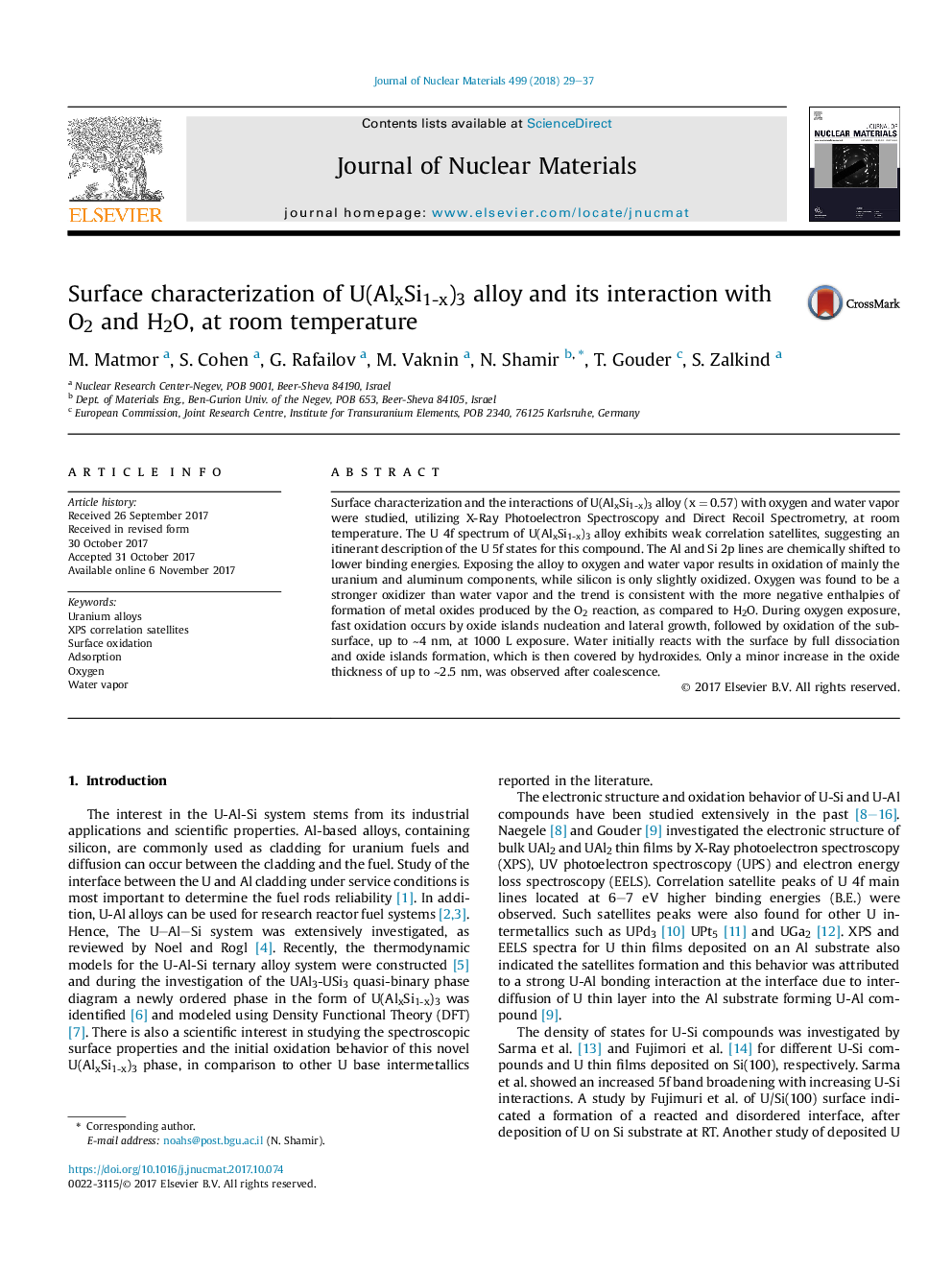| Article ID | Journal | Published Year | Pages | File Type |
|---|---|---|---|---|
| 7963494 | Journal of Nuclear Materials | 2018 | 9 Pages |
Abstract
Surface characterization and the interactions of U(AlxSi1-x)3 alloy (x = 0.57) with oxygen and water vapor were studied, utilizing X-Ray Photoelectron Spectroscopy and Direct Recoil Spectrometry, at room temperature. The U 4f spectrum of U(AlxSi1-x)3 alloy exhibits weak correlation satellites, suggesting an itinerant description of the U 5f states for this compound. The Al and Si 2p lines are chemically shifted to lower binding energies. Exposing the alloy to oxygen and water vapor results in oxidation of mainly the uranium and aluminum components, while silicon is only slightly oxidized. Oxygen was found to be a stronger oxidizer than water vapor and the trend is consistent with the more negative enthalpies of formation of metal oxides produced by the O2 reaction, as compared to H2O. During oxygen exposure, fast oxidation occurs by oxide islands nucleation and lateral growth, followed by oxidation of the sub-surface, up to â¼4 nm, at 1000 L exposure. Water initially reacts with the surface by full dissociation and oxide islands formation, which is then covered by hydroxides. Only a minor increase in the oxide thickness of up to â¼2.5 nm, was observed after coalescence.
Related Topics
Physical Sciences and Engineering
Energy
Nuclear Energy and Engineering
Authors
M. Matmor, S. Cohen, G. Rafailov, M. Vaknin, N. Shamir, T. Gouder, S. Zalkind,
